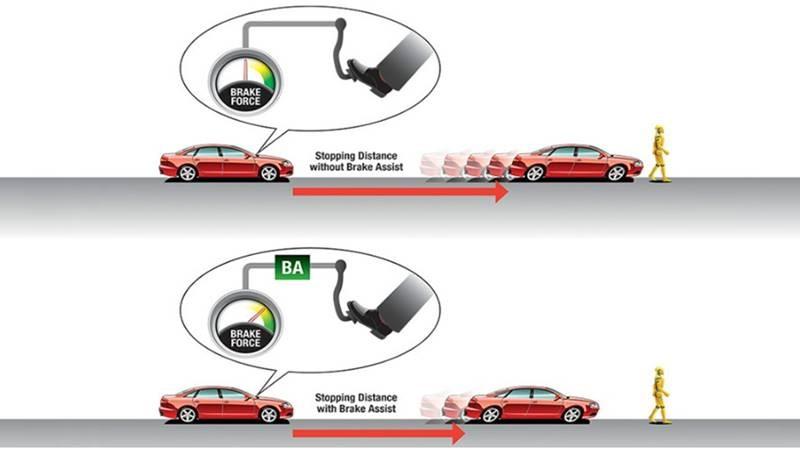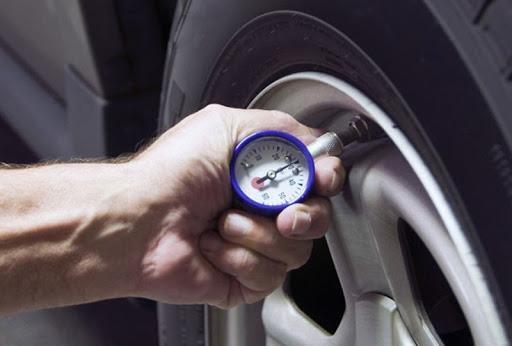1. Safety car brake standards:
The brake is an important device, with the highest frequency of vehicle usage. The car brake is divided into hand brake and foot brake. Mechanical handbrake is now largely replaced by the electronic handbrake. Brakes need to ensure the necessary sensitivity and stable brake force.
The foot brake works based on the wheel deceleration mechanism, increasing the frictional force of the wheel with the road surface, slowing down, and stopping the vehicle when the driver applies the brake. When the vehicle moves normally on a smooth and flat road, the vehicle will stop slowly when the brake pedal is pressed several times. However, there are cases when the driver encounters an unexpected obstacle, the driver loses his temper, and the brake force is not large enough. An automatic brake, also known as a sensor brake, is a necessary device in the above emergencies.
The Brake Assist System (BAS) is an emergency brake support system. The system automatically recognizes when the driver needs to brake harder than usual and pushes the brake force to the maximum. But when braking suddenly with a strong force, the wheel is often locked, sliding on the road is very dangerous. At this time, the ABS (Anti-Locking Brake System) will click and release the brake continuously to replace the driver, not letting the wheels be tightened. Combining both emergency braking and anti-lock braking systems, the car will reach the maximum braking threshold without the wheel locking up, causing danger.
In addition, there are times when the driver is unaware of the dangerous situation, such as a vehicle approaching at high speed or a pedestrian in a position the driver cannot see. The Automatic Emergency Braking (AEB) system automatically calculates and analyzes dangerous situations. AEB will automatically brake sharply, stopping the vehicle completely without the driver applying the brake, helping to prevent accidents or reduce the impact in the event of a collision.

The emergency brake assist system adjusts the brake force to the maximum
2. Standards of vision and observation:
Visibility while driving is the second standard to ensure the vehicle stays in the right lane and avoids unnecessary collisions. Most collisions and accidents often happen in blind spots that the driver cannot see. Therefore, it is necessary to install some systems to support the observation around the vehicle when traveling on the road.
One of the observation supports is the rearview mirror, which the driver can see behind and on the sides of the car. This helps you avoid collisions or know how to quickly handle situations such as safely changing lanes.
In addition, another vision system is a 360-degree camera mounted almost all around the vehicle. The system will receive signals and display images on the central screen, including hidden corners, blind spots that are difficult to see with the eyes, and rearview mirror. The driver can easily observe the entire area near the position of the moving vehicle to promptly handle it when there is an impending incident.
3. Safety standards for collision:
It is essential to ensure the safety of the driver and passengers in the event of an incident or accident. As a result, most vehicles are required to have airbags and belts. The belt helps prevent the occupants from hitting the object in front of them, reducing injuries. However, the acceleration on the car can still cause the driver to collide with the steering wheel, at this time the airbag acts as a cushion to inflate in the event of a strong collision, reducing head and chest injuries. In addition, all types of cars before being on the market are also evaluated for their bearing capacity, ensuring that the vehicle can withstand a certain amount of force without being damaged in a collision.
4. Standard tire pressure:
According to long road driving experience, under-inflated tires are the cause of accidents, whereas over-inflated tires reduce friction, making it easy to slip when the road is wet. Therefore, drivers need to pay attention to car tire pressure, the amount of inflation should only be equal to the standard index. The tire pressure index printed on the sidewall or the car door is the standard tire pressure indicator.

It is recommended to check the tire pressure with a specialized tool before traveling
To be sure about the amount of air inflated into the tire, it is advisable to have specialized tire pressure gauges to ensure that the tire is not too underinflated or overinflated. A specialized device used to measure tire pressure is the TPMS tire pressure sensor, which helps drivers check tire pressure before departure. The parameters of temperature and tire pressure will be displayed on the sensor screen and give a warning signal if the index is lower or exceeds the standard pressure for the driver inside the vehicle.
Bridgestone has always focused on safe tire pressure standards. When choosing tires from Bridgestone or car maintenance, the driver is guided with information and fully checked the safety factors for the car, which is also to ensure maximum safety for the driver.